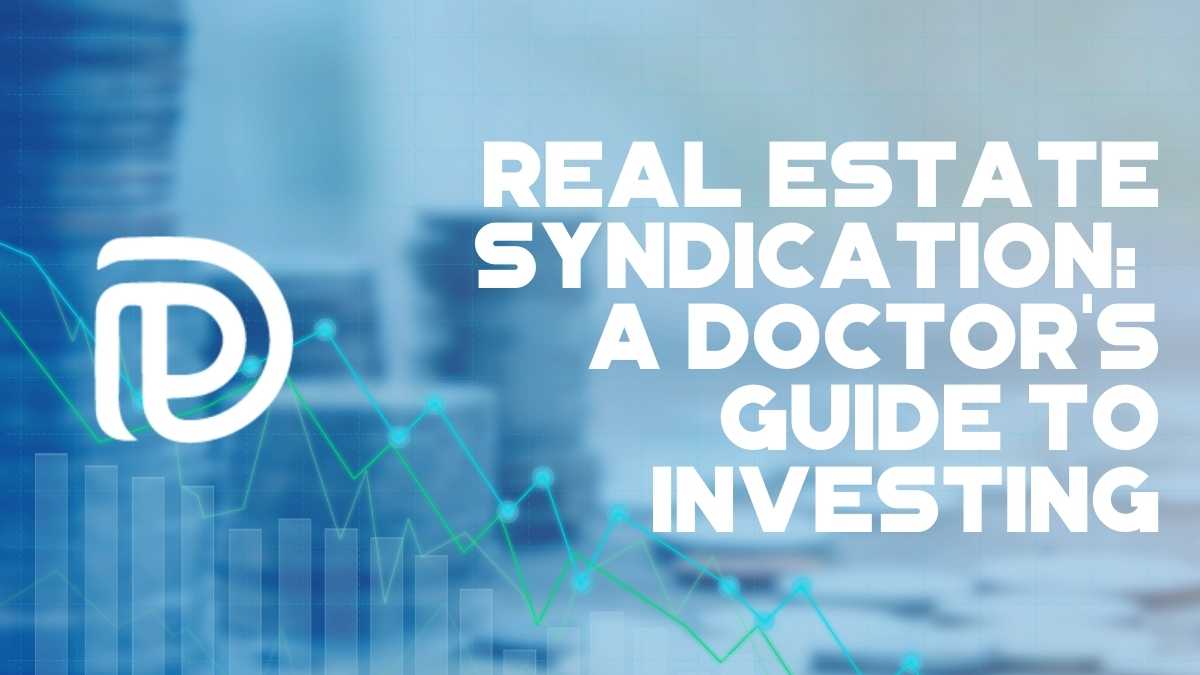After a minor wrist injury while snow skiing several years ago, I realized that we were relying on only one income stream – the one from my periodontal surgery practice.
This was a major wake up call. Shortly thereafter I began searching for alternative income streams without having to work more hours.
It seemed that most successful people had real estate in their portfolio which provided these additional income streams that I was searching for.
I decided to start off with real estate crowdfunding in order to attempt to grow passive income.
As a full time periodontist, I didn’t have time to get into property management (be a landlord) so I decided to invest in a couple of the popular crowdfunding sites at that time:
- Realty Shares
- Patch of Land
My job on this site is to be as transparent as possible. There’s nothing that irks me more than someone not telling the “entire” truth when it comes to investing.
The deals I had with the two companies were:
- Patch of Land – one debt deal
- Realty Shares – three equity and one debt deal
I’ve since exited the Patch of Land deal and only have two Realty Shares deals remaining.
I lost BIG time on an equity deal in Realty Shares and no longer invest in online crowdfunding sites. Why? You don’t get to know who you’re investing with.
Related article: 7 Ways to Evaluate a Real Estate Sponsor
I’ve since switched to focusing only on real estate syndication deals directly with the deal sponsor to replace my active income.
Investing in real estate deals has been one of the best decisions I’ve made as I used to only invest in the stock market.
About the time I made the switch, I started sharing information that I was learning along the way on this blog.
As it became more popular, I decided to provide doctors and other high-income earners even more information including deals that I was personally investing in by starting the Passive Investors Circle.
It was also a way for me to answer some of the frequently asked questions when it came to passive real estate such as:
- What is a real estate syndication?
- How and where do I find them?
- What are the risks?
I recommend that before you invest in anything, including real estate, you should fully understand what you’re getting into. If you don’t, then continue to educate yourself and ask questions.
It’s your hard earned money we’re talking about so protect it!
If you’re new to the real estate game or want a refresher, here’s what you need to know about real estate syndications.
What Is A Real Estate Syndication?
A real estate syndication is the pooling of funds from a group of investors in order to purchase a property that’s more expensive than any of them could have afforded on their own.
So instead of buying several properties individually, the group of people can come together and buy a larger asset usually with a sponsor. This allows them to become either direct or indirect owners in the property.
This sponsor group typically finance these deals with two forms of capital:
- debt
- equity
A frequently asked question I commonly get is, “Why do sponsors need investor money?”
This is a great question. Typically banks (debt) will NOT provide all of the money to finance these projects so sponsors have to come up with the difference (equity). It’s for this reason they seek outside capital (from investors) to provide the equity needed to purchase the property.
The best part about investing in a syndication deal is that it allows you to put money into real estate without having to do the work of finding or managing the property yourself. That’s the part I enjoy the most!
For instance, I can make an investment as a passive investor of say $75,000. That investment would be paired with someone else that puts in $75,000 and another that puts in $100,000 and on and on.
By pooling our resources, we now have enough to buy not just a rental property, but something bigger, like an apartment building.
Who’s Involved in a Real Estate Syndication?
There are typically two parties involved with a real estate syndication.
Sponsor
Depending on the legal structure of the organization created for the investment, the Sponsor is technically known as the General Partner (GP) or Manager.
This group plays the most critical role in the investment process.
This person or group is the one that:
- Find the investment property
- Obtain financing
- Acquire the investment property
- Manages the property
Not only does the sponsor invest their time, they also invest their money. Typically this amount can range from 5-20% of the total equity capital for the real estate investment.
Investors (Limited Partners)
The second party is the investors (you and I) who invest with the sponsor and own a percentage of the real estate.
Here’s the part that got me excited about becoming an investor…
They don’t have to be involved with:
- acquiring the property
- arranging financing
- managing the property
Investors are usually responsible for investing between 80-95% of the total.
Remember, they have no active responsibilities in managing the asset.
How Are Syndications Structured?
Most syndications are structured as a Limited Liability Company (LLC) or a Limited Partnership (LP) to own the property on behalf of investors.
The rights of the Sponsor and Investors, including rights to distributions, voting rights, and the Sponsor’s rights to fees for managing the investment, are set forth in the LLC Operating Agreement or LP Partnership Agreement.
Make sure you read this agreement carefully and ask questions when needed.
How Do Investors Make Money?
The Investors (LP) in syndications are typically compensated in three ways:
1) Preferred return
A preferred return (pref) refers to the ordering in which profits from a real estate project are distributed to investors.
It’s a threshold return that limited partners are offered prior to the general partners receiving payment.
The standard preferred return is 6-7% of their current capital account (capital account is initially equal to their equity investment).
That is, the LP will receive a return of up to 6% before the GP is paid. If the real estate cash flows 6%, the LP receive the 6% preferred return and the GP does not receive a profit split.
If the real estate cash flows less than 6%, the LP receives a return of less than 6%. If the real estate cash flows more than 6%, the LP receive their 6% preferred return and the remaining profits are split between the LP and GP.
Typically, the preferred return is considered a return on capital. That is, the preferred return distributions do not reduce the LP’s capital account.
Example
In order to calculate the preferred return, you’d multiply the total equity investment from limited partners by the preferred percentage.
If it’s 6% and the limited partners invested $1 million, the annual preferred return is $60,000 (0.06 * $1,000,000). Typically, profits above the pref are split between the general partners and limited partners.
You maybe asking yourself, “How does the general partner set the pref percentage?”
They do this based on three things:
- the business plan
- goals of their limited partners
- what other general partners who are implementing similar business plans are offering
2) Profit Split
If a preferred return is offered, the remaining profits are split between the LP and GP. The typical profit splits are either 70/30, 80/20 or 85/15 (LP/GP).
In an 80/20 situation, if there is $1 million left in profit after the preferred returns get paid out, the investors would get $800,000, and the Sponsor would get $200,000.
The LP will receive their distributions from the profit split on an ongoing basis during the business plan (if the cash flow exceeds the preferred return) and/or at the sale of the real estate.
Typically, the distributions from profit splits are considered a return of capital. That is, the profit split distributions reduce the LP’s capital account and therefore the preferred return.
However, some GPs will continue to pay out a 6% preferred return based on the initial equity investment and catch-up with the profits from sale.
3) Refinance or Supplemental loan
If the GP refinances into a new loan and/or secures a supplemental loan, the LP will typically receive a distribution that is a portion of their initial equity investment.
Similar to the profit split, the proceeds from a refinance or supplemental loan are typically considered a return of capital. That is, the proceeds reduce the LP’s capital account.
Who Can Invest?
For the most part, syndications are typically open only to an accredited investor.
To be considered an accredited investors by the SEC, you must either:
1) Have an income of at least $200,000 each year for the last two years, or
2) If you’re married, have a combined income of at least $300,000 each year for the last two years, or
3) Have a net worth of at least $1 million, excluding your primary residence, either individually or jointly with your spouse
Example Of How A Syndication Works
Here’s a typical example of how a syndication works. Typically, investors will receive an email which includes the investment summary and investor webinar to review the real estate opportunity.
The deals I’ve been involved with (and are currently in) have been with sponsors with a proven track record such as Dr. Tom Black at Napali Capital. During the webinars he hosts, potential investors are allowed to ask questions pertaining to the deal as well.
Typically, investment spots are first-come, first-serve with a minimum amount to invest. The average minimum is usually $50-75K and there’s a deadline to close the deal.
If you decide to invest, you’ll need to complete and sign the investor documents, also known as the Private Placement Memorandum (PPM), which is a legal document as you are purchasing equity ownership in a LLC.
After you complete the PPM, you’ll send in your funds to complete your investment.
After the property closes, you should receive regular updates and financials on the investment. This is one reason I have (and continue to invest with Dr. Tom).
His company sends out monthly emails detailing what is being done with the property (renovations) and how the financials are doing.
At the end of the year, the sponsor will send out a K1 form to file with IRS.
The Avery
Here’s one of the deals I’ve done in the past:
My first deal involved an apartment complex in Denton County, TX called The Avery.
- Purchase price: $40.8 million
- 350 Units
- $50 K minimum investment
- Projected annual Cash on Cash (Coc) returns: 9%
- Internal Rate of Return (IRR) of 18.6% over a 5 year hold period
So far, the syndications I’ve done with Dr. Tom have paid as promised.
Should You Invest?
When considering real estate syndications, understanding the structure and process discussed above can help you determine if it is a good fit for your portfolio.
I can’t stress enough for you to do your due diligence to know exactly what you’re potentially getting into. The majority of the work is done up front by vetting the opportunity and sponsor.
If you do invest, you must realize that your money is going to be tied up for 5-7 years on average.
Are you interested in learning more about investing in apartment syndications?
Join The Passive Investors Circle with nothing more than your email address to learn more.
Join the Passive Investors Circle


